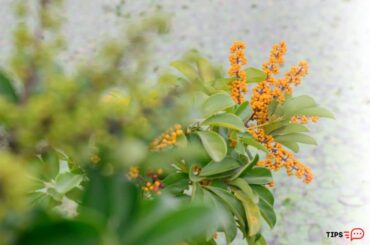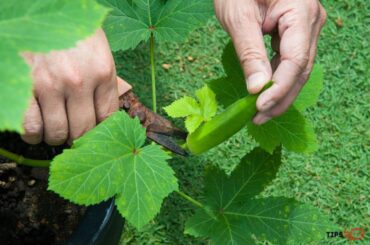If you have an orchid water culture it is important to know about “what is Orchid water culture mold” and how to prevent them. So, from this article, I have explained how I handle this whenever you come across a situation like that, and I hope it would be useful for all the orchid lovers.

How to identify orchid water culture mold?
You could identify the orchid mold by its white fuzzy coating. The roots of the orchids would be dark gray or black when the plants suffer with this condition. If you are an orchid lover, you may have come across orchid water culture mold many times. So, if you have a freshly purchased orchid you should avoid snipping the roots off. Instead study the plants for about two weeks’ time and try to learn what kind of roots they have.
So, if you spot any development ( which has started to rot), you could get rid of that velopment from the roots. Further if there is any rotting in the root, you could pinch them off and get rid of the rotten part as well. The remaining root can keep hydrating the plants and don’t try to cut off all roots, your plants may start lacking sufficient roots.
Further if your plants are already developing new roots and if you try to snip off the remaining root parts, it will badly affect the hydration of the plants. So, what I suggest you do is to remove the velomon and keep the root intact as they are. That said, you need to remove the damaged plant roots and leave the remaining roots on the plants so that it can hydrate the plants.
Literally if there are firm healthy roots, you need to leave them as they are so that they can hydrate the plants. For example, if we consider Phalaenopsis orchids , their roots are in water right throughout. That way you can grow these plants in full water pipes. So, if you leave rotten roots on the plants, you could see how the water becomes dirty and discolors.
In addition to that, rotting roots may result in bacterial infections in the specimens too. Hence, you should remove the rotten parts out of water. Literally you should never let those rotten roots sit along with the healthy roots of the plants. Hence why specified the importance of removing the rotten rots from the plants so that it would not lead to adverse effects.
On the other hand, if you have grown the orchids such as Kalia in semi water culture, you do not need to remove old development. In fact, you can leave the roots intact as they are in the specimen. If we consider Kalia orchids for example, they usually have an open root system where the roots are located somewhat far from each other. It will further allow for proper air movement.
Hence you can leave the root intact as they are in the specimen. Consequently, it would help the pants to stay elevated in the specimen. If you don’t do that, the rhizomes of the plants would sit right on the water as well.
If you adhere to this tip, it will help the plants to stay firm in the water without becoming elevated in the specimen. Overtime, the roots will grow longer and provide support for the plants to stay off the water.
Furthermore, the rotten roots would be exposed to water for a shorter period like 48 hours and it will not create a massive impact on the healthy roots of the plants, and the impact from that could be very minimal. On the other hand, if you have an orchid such as Cat lea, their roots will grow more compact.
Consequently, there will be less air movement as well. In this circumstance there will be some potential for mold to take place. So, here best would be to remove all the dead, decaying developments of the roots. It is vital that you do this stem as it could be something concerning as even the dry rotten roots can badly affect the healthy roots of the plants.

Is water culture good for orchids?
Yes, water culture would work well with the orchids. Once you add water in a planter it would create a humid atmosphere. If you are an orchid lover, you may already be aware that they are humidity lovers. There are three ways of proving a water culture for the orchids. They are such as full water culture, semi water culture and semi hydroponic culture etc.
You need to place the plants on the water filled container which will allow the roots to get in contact with water. However, when you practice this method, you need to ensure that there is sufficient air flow in the specimen. So, I suggest using a container which has a wider opening for this purpose. You may sometimes make errors while doing this.
That said, there could be orchids which can thrive well here where some won’t. However, if you succeed with it, it would be such a fantastic way of growing the orchids.
What do I do if my orchid has mold?
The way you treat the orchid mold differs from species to species. Literally each orchid species would want a different way of handling them. So, if you have grown the orchids in full water culture, you could neglect in removing the development as if you do so, your plants pseudomonas and rhizomes would get in contact with water and make things worse.
If you have grown the plants in semi water culture, you could consider placing glass beats or pebbles and place a layer of them somewhat higher in one side of the glass container. Then you can place the rhizomes which do not have roots on top of the beads. Then it will assure that rhizomes don’t get in contact with water.
Eventually it would allow them to grow the new roots into the water. So, the elevated part of the specimen would be protected as they will not get in contact with water. On the other hand, the newly grown roots can grow down and stay hydrated.
In addition to that if we consider orchids such as wild cats which have compactly grown roots, best would be to remove the voluminous growths unless they would cause a lot of mold.
Is mold harmful to orchids?
Mold could be harmful for orchids. In fact, it could be severe enough that it may even result in the deaths of the plants. If you don’t treat them, chances are that it may keep spreading and severely impact the roots of the plants. Having said that, sometimes mold can perish on their own too.
How to get rid of orchid mold?
You may first consider trimming the infected plant parts. Best is to start off cutting the most severely affected plant parts where you can spot the mold significantly. Next you need to enhance the air circulation within the specimen. In addition to that I recommend applying some cinnamon on the damaged plant parts. Cinnamon is a fine antibacterial and antifungal dust which would be really effective here.
Read Next : How Do You Fertilize Orchids In Water Culture?
Read Next : Do You Water Orchids From The Top Or Bottom?




